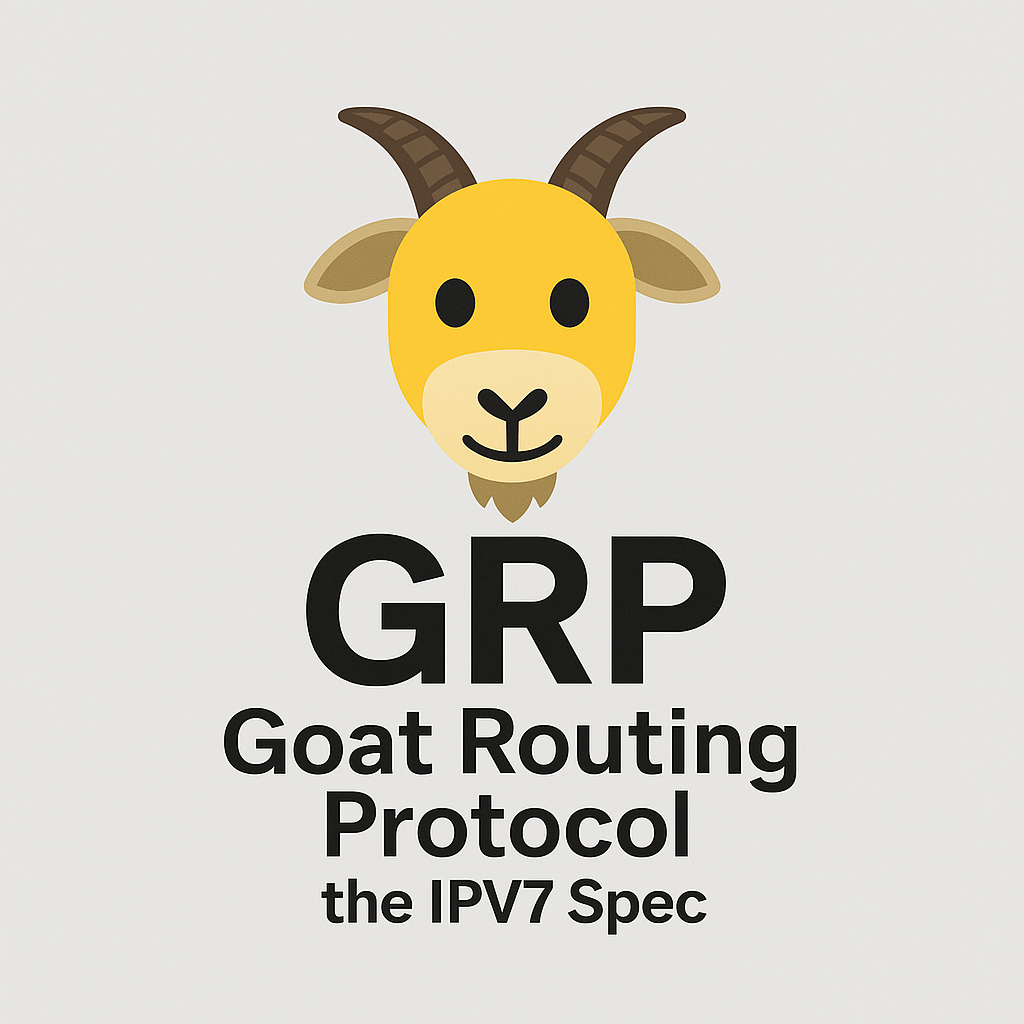Insane Technical Paper v1.0 – INTERNAL RELEASE ONLY

Project Title: The IPv7 Protocol Specification: A New Dawn in Recursive Addressing and Autonomous Goat Allocation
ABSTRACT
IPv6 has failed to capture the hearts, minds, and hooves of global network administrators. With sluggish adoption, existential dread over colons, and addresses that resemble eldritch incantations, a new solution is required.
Enter IPv7.
Designed by accident during a firmware upgrade at 3AM involving a misconfigured microwave and a haunted CMTS, IPv7 revolutionizes packet routing through recursive topology inversion, psychic routing tables, and a bold step forward in caprine-integrated networking.
1.0 INTRODUCTION
While IPv4 offered 4.3 billion addresses and IPv6 offered so many we just gave up counting, IPv7 offers exactly 42 addresses—but each one is infinitely nested within itself.
Each address is fractal in nature. Viewing one requires a recursive viewer or a packet shaman. Standard notation has been replaced by Spiraling Recursive Ternary Emoji (SRTE) and mandatory goat tags.
Example IPv7 Address:
🐐⟲⟲7️⃣.🧠🔁🪞.🌌🧵∞.⏳⟲♻️::🐐Routing tables must be written in Middle Out YAMLog, a hybrid YAML/Logfile format that no human can parse twice the same way. BGP sessions are now conducted entirely through interpretive dance or a handshake protocol known only to livestock.
2.0 ADDRESSING SCHEME
IPv7 introduces HyperNested Recursive Addressing (HyNRA), which operates on a principle similar to an Escher staircase:
- Each device has one address.
- That address contains all other devices it will ever talk to.
- If two devices try to communicate, they recursively unfold their addresses into a quantum subnet bubble.
- Inside the bubble, goats assign MAC addresses using a deck of Uno cards.
Subnetting Example:
/🐐16 – Designates a goat-managed quantum subnet
/🦝32 – Indicates an untrusted raccoon node (typically printers)
/🌪️64 – Reserved for remote tornado sensors connected via PPPoMoan3.0 GOAT-DRIVEN NETWORK CONTROL
Unlike previous protocols, IPv7 includes mandatory GCP (Goat Control Protocol).
Each rack must house a minimum of one certified Network Goat, trained to:
- Assign psychic routing hints
- Resolve ARP disputes by headbutting rogue nodes
- Maintain synchronization with the Time Server of the Mountain
In case of goat failure, a Failover Possum may be deployed, though results vary and often involve unexplained DNS records pointing to 1996.
4.0 FIREWALLS AND SECURITY
IPv7 firewalls utilize Inverse Intent Detection, filtering traffic not by what it is, but by what it might someday become.
Rules are defined like:
- if: packet.intention == "suspicious in the year 2049"
then: route_through: “goat.vortex.cache”All firewalls are NATless. NAT is replaced with FAT (Fabricated Address Translation), where addresses are simply made up at runtime and justified in a strongly-worded memo to your compliance officer.
5.0 CONCLUSION
IPv7 is the networking standard of the future, assuming that future is non-linear, livestock-compatible, and emotionally unstable. Early adopters have reported faster packet delivery, lower blood pressure, and spontaneous enlightenment.
RFC submission pending approval from the Council of Network Elders, currently unreachable due to a recursive OSPF loop inside a recursive OSPF loop.
APPENDIX A: MANDATORY HARDWARE
- Goat enclosure (with psychic feed upgrade)
- Fireproof YAML interpreter
- Reflective surface for address visualization
- Two carrier pigeons in case the IPv7 tunnels collapse